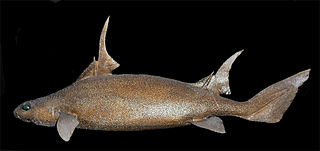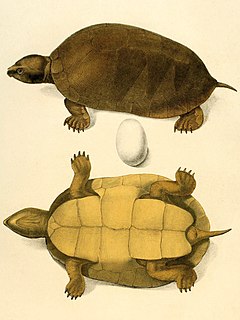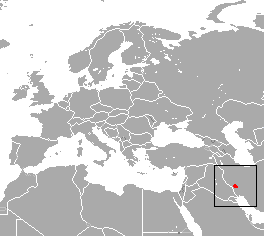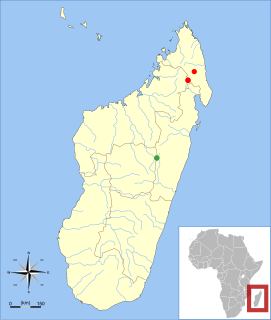
The sailfin roughshark is a species of dogfish shark in the family Oxynotidae, found in the eastern North Atlantic from Scotland to Senegal between latitudes 61°N and 11°N, at depths of between 265 and 720 m. Its length is up to 1.2 m (3.9 ft).

A species that is extinct in the wild (EW) is one that has been categorized by the International Union for Conservation of Nature as known only by living members kept in captivity or as a naturalized population outside its historic range due to massive habitat loss.

The big-headed Amazon River turtle, also known as the big-headed sideneck, is a species of turtle in the family Podocnemididae. The species is monotypic within the genus Peltocephalus.

The Somali hedgehog is a species of mammal in the family Erinaceidae. It is endemic to Somalia and Somaliland. The Somali hedgehog is nocturnal.

The Javanese shrew is a species of mammal in the family Soricidae. It is endemic to Indonesia.

The pale gray shrew is a species of mammal in the family Soricidae. It is endemic to Pakistan. It is threatened by habitat loss.

The Iranian shrew is a species of mammal in the family Soricidae. It is endemic to Iran. It is threatened by habitat loss.

The short-faced mole is a species of mammal in the family Talpidae. It is monotypic within the genus Scaptochirus. It is endemic to China.

Portenko's shrew is a species of mammal in the family Soricidae that is endemic to Russia.

The long-tailed mountain shrew is a species of mammal in the family Soricidae. It is found in China, Myanmar, Nepal, and Vietnam.

The Lowe's shrew is a species of mammal in the family Soricidae. It is found in China, Myanmar, Thailand, and Vietnam.
Mesoperipatus is a monospecific genus of velvet worm in the Peripatidae family, containing a single species Mesoperipatus tholloni. It is found in Gabon. This species is listed as Data Deficient on the IUCN Red List.
Speleoperipatus is a monospecific genus of velvet worm in the Peripatidae family, containing the single species Speleoperipatus spelaeus.
Allocharopa is a genus of very small air-breathing land snails, terrestrial pulmonate gastropod mollusks in the family Charopidae.

Stygobromus is a genus of amphipod crustaceans that live in subterranean habitats. As well as a large number of species in North America, a smaller number of species are also known from Eurasia. Most of the North American species live in areas which were not covered by the Laurentide Ice Sheet, although a few species seem to have survived under the ice. A number of species are on the IUCN Red List as endangered species (EN) or vulnerable species (VU); all the listed species are endemic to the United States. One species, S. lucifugus, is extinct. Stygobromus includes the following species:

The eastern voalavo is a rodent in the family Nesomyidae which occurs in the Anjozorobe forest of eastern Madagascar. Although surveys before 2002 failed to record the species, it is common in some places. However, it is threatened by habitat loss because of slash-and-burn agriculture. The species was formally described in 2005 and is most closely related to the only other species of Voalavo, the northern voalavo from northern Madagascar.













